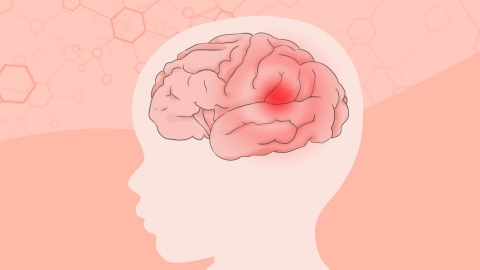What causes cerebral vascular occlusion?
Generally, cerebral vascular occlusion may be caused by factors such as aging, unhealthy lifestyle habits, hypertension, hyperlipidemia, and cerebral atherosclerosis. It is recommended to seek timely medical consultation, identify the underlying cause, and undergo symptomatic treatment under a physician's guidance. Detailed analysis is as follows:

1. Aging: With advancing age, vascular elasticity gradually declines, and lipid deposition on the vessel walls can easily occur, leading to narrowing of the cerebral vascular lumen and increasing the risk of occlusion. This is part of the physiological degenerative process. Maintain regular作息 (作息 should be translated as "作息" in English medical context), avoid excessive fatigue, and undergo regular cerebral vascular examinations for early detection and intervention.
2. Unhealthy lifestyle habits: Long-term smoking, excessive alcohol consumption, and a high-salt, high-fat diet can damage vascular endothelium, promote thrombus formation, and trigger cerebral vascular occlusion, often accompanied by dizziness and fatigue. Quit smoking, limit alcohol intake, adjust dietary habits, reduce consumption of high-salt and high-fat foods, eat more fresh vegetables and fruits, and engage in moderate physical activities such as walking or jogging.
3. Hypertension: Prolonged elevation of blood pressure can damage the cerebral vascular endothelium, causing thickening of the vessel walls and narrowing of the lumen, which increases the risk of occlusion. It is often accompanied by headache and a feeling of head fullness. Patients may follow medical advice to use medications such as nifedipine sustained-release tablets, captopril tablets, or valsartan capsules to control blood pressure. Regular blood pressure monitoring is important to avoid excessive fluctuations.
4. Hyperlipidemia: Excessively high levels of cholesterol and triglycerides in the blood can deposit on the vessel walls forming plaques, leading to cerebral vascular occlusion, often without obvious symptoms. Patients may follow medical advice to use medications such as atorvastatin calcium tablets, rosuvastatin calcium tablets, or fenofibrate capsules to regulate blood lipid levels. Consumption of high-fat foods such as animal offal and fried foods should also be reduced.
5. Cerebral atherosclerosis: Accumulation of lipids on the cerebral vessel walls forms atherosclerotic plaques. Plaque detachment or rupture can trigger thrombosis, resulting in cerebral vascular occlusion, often accompanied by limb numbness and speech impairment. Patients may follow medical advice to use medications such as aspirin enteric-coated tablets, clopidogrel bisulfate tablets, or ginkgo biloba leaf tablets. In cases of severe occlusion, cerebral vascular stent implantation may be required to dilate the blocked vessel and restore cerebral blood flow.
In daily life, it is important to control body weight and avoid obesity, maintain emotional stability, and reduce mental stress. Comprehensive management of risk factors can help lower the probability of cerebral vascular occlusion and promote vascular health.






